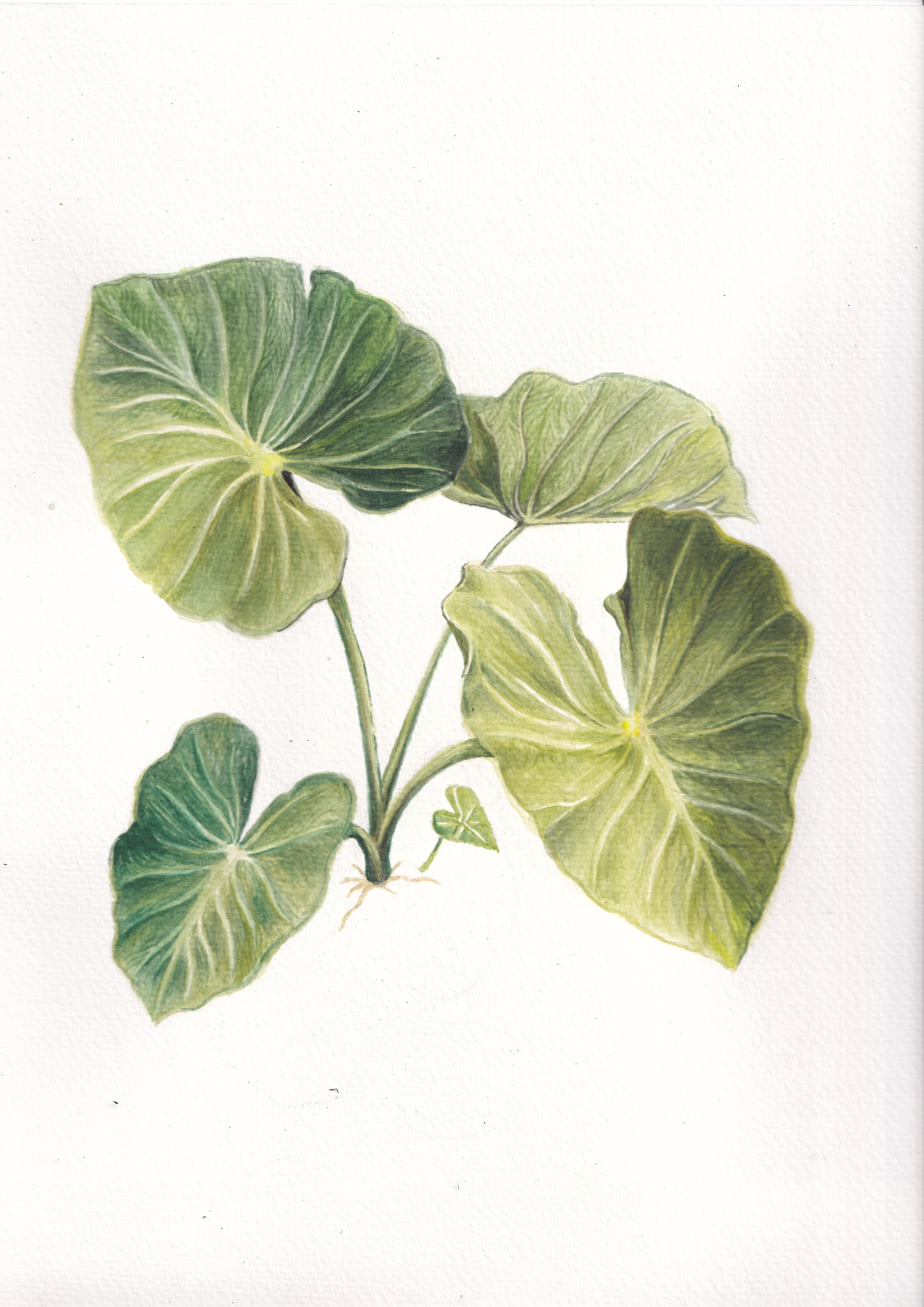Kalo (aka Taro) has great significance in Native Hawaiian culture. It is a kupuna (ancestor) to Kanaka people and the main staple crop. Every part of the plant is edible, from the lu'au (leaf) to the ha (stem) to the corm (most commonly eaten as poi, kulolo, etc). Kalo was also used for medicine and as offerings to the Hawaiian gods.
This is an ongoing project with my Uncle Keoki, who has collected many of the varieties of kalo in Oahu and allowed me to study and learn from them. Pictured below are many of his plants, and my illustrations and sketches from observing them.
Watercolor and colored pencil.
June—September 2024.
KALO OF HAWAI’I
‘Ula’ula Kumu
Named after the Hawaiian Kumu fish, the stems sharing the bright red color and white stripes of their ocean counterpart.
Nihopu’u
Native variety, name meaning buck teeth.
Piko uliuli
From the Piko family, and Uli means dark color, seen on the stem
Apuwai
Apu meaning coconut shell or cup, and wai meaning water, rain gets caught in the upward facing leaves. This water was given to the Ali‘i (chiefs) because the water came directly from heaven.
Photos of the Kalo on my Uncle’s Driveway
Mahalo to Kupuna Kalo for providing additional information and a database of characteristics for different varieties. (https://www.kupunakalo.com/kalo-varieties)
Credit to Bulletin 84 published by the University of Hawaii for documenting and providing context for taro in Hawaii.






